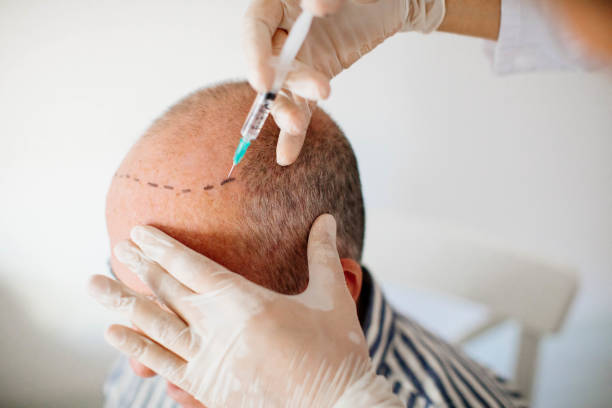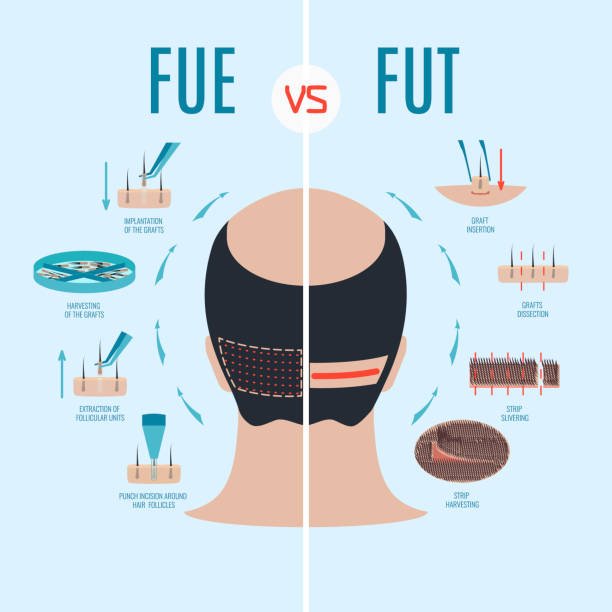Introduction
When ever, we see a person, with a bald head, we assume him to be aged. But thanks to the advancements in science and medicine, one can have completely natural-looking and naturally growing hair after they have gone bald. This technique of growing hair back is called hair transplant and it generally involves the transplantation of hair from some other part of the body to the bald areas of the head.
Hair loss can because by a variety off actors, including heredity, stress, sickness, and others. Butt here is still hope! Hair transplants might help you regain your confidence as well as your hair.

Procedure
Hair transplant is a clinical process that involves the transplantation of hair in areas of the head which lack hair .And after the transplant, hairs resume their normal and natural growth.
For the transplant to start, doctor will first examine the condition of the baldness and decide the harvesting and grafting method of hair. Harvesting involves there moval of strips of hair from the back of your head (or any other portion of your body with enough healthy hair). After harvesting hair, they are transplanted to the balding areas. You can expect the procedure to take few hours, and you ‘llbe under local anesthesia the entire Procedure.
Once the procedure is complete, you’ll probably want to take it easy for few days. You might experience some swelling and bruises in the area where the surgery was performed, but it should go away within a week or two. During this whole time, it’s important to keep in mind that hair transplants are not quick fixes. It will take about nine to twelve months for new hair to grow completely. During that, you’ll need to be careful not to damage the transplanted hair. So, no vigorous exercise, and definitely no pulling or tugging on your hair, rather let the hair take their time and let them grow naturally. There is no need to use any specific drugs and medications unless the physician or dermatologists prescribe any.

Techniques
There are two most frequently used hair transplantation procedures namely follicular unit transplantation (FUT) and follicular unit extraction (FUE).
FUT is the most popular kind of hair transplantation. FUT involves the removal of a strip of skin from a donor site containing hair follicles and transplanting the hair follicles to a balding or balding recipient site.
As technology has made advancements, the techniques of hair transplant have also made significant progress. FUE hair transplantation is a relatively new hair transplantation technique. Individual hair follicles are removed from the donor site and transplanted to a balding recipient site.

Post-process effects and care
After the hair transplant, you’re essentially getting new hair follicles implanted into your scalp. And because these follicles are your own, hair will grow naturally. But considering the post-process effects of the hair transplant, some very specific and careful measures must be taken in order to stay healthy as well as to keep the proper growth of transplanted hair. The most common side effect is swelling of the forehead and face which is temporary and usually lasts 5 to 7 days. Other rare side effects include mild bleeding, infection, bruises around the transplanted areas, and itching. But these side effects occur from a couple of days to a couple of weeks and mostly are not serious.
“Shock loss” is another side effect which includes the loss of newly grafted hair. But is also temporary and the lost hair now will grow back after some time.
The downside is that the procedure is a bit invasive. You’ll be under local anesthesia, so you won’t feel any pain, but you will be awake for the entire procedure. It takes about four to eight hours, depending on how many grafts are implanted.
Once the procedure is done, you’ll need to take care for few days. You can’t wash your hair on the first day, and you’ll need to avoid strenuous activities for about a week. But other than that, you should be good to go. You’ll start seeing new hair growth within three to four months, and the full results will be visible within a year.
Recovery and healing time
After the procedure is complete, you need to allow your scalp to heal. Initial recovery takes 1 to 2 weeks It means that you need to avoid any strenuous activity and keep your head elevated as much as possible. Also, avoid direct sunlight and any strenuous activity.
You will be given a prescription for pain medication, which you should take as directed. You should also keep the area clean and dry. Shampoo your hair as directed, but avoid rubbing or scratching the area.
The time required to produce entirely natural-looking hair can depend on the type of technique used and some other parameters. In general, it might take anywhere from four to six months for new hair to begin growing. But bear in mind that everyone’s body is different, so consult to your doctor about what to expect. During this time, you will need to be very careful with your hair, and avoid any activities that could damage the transplanted hair.
Benefits of hair transplant
There are various advantages to hair transplantation. Hair transplantation can assist with the following issues:
• Restoring hair to the scalp
• Restore the brows
• Repair your lashes
• Restore beard, chest, and pubic hair, as well as fill in scars from accidents or surgery.
Apart from these, regaining lost hair will also help you feel more confident and have belief in you and your appearance.
Cost
Hair transplants are not inexpensive. However, it is a permanent treatment for hair loss. The cost generally depends on the amount of hair being grafted. This is a one-time operation that takes an eight to ten hours, depending on the location and design of your desired outcomes.
Transplants can be costly since they need the services of a professional doctor or surgeon as well as additional personnel. The price may include surgery fees, prescription costs, and facility costs.
Conclusion
Overall, hair transplantation is currently a safe and efficient method of restoring hair to thinning or balding regions of the scalp. The results can be quite natural-looking, and the operation can be done in such a way that scarring is kept to a minimum. As a result, hair transplantation is a fully
risk-free and successful method of treating hair loss. It is a long-term hair loss therapy that can repair your thinning hair. Anyone, male or female, can get the treatment of a hair transplant. It is a very personalized experience so it is always important consult with the surgeon before you decide whether you need it or not.
